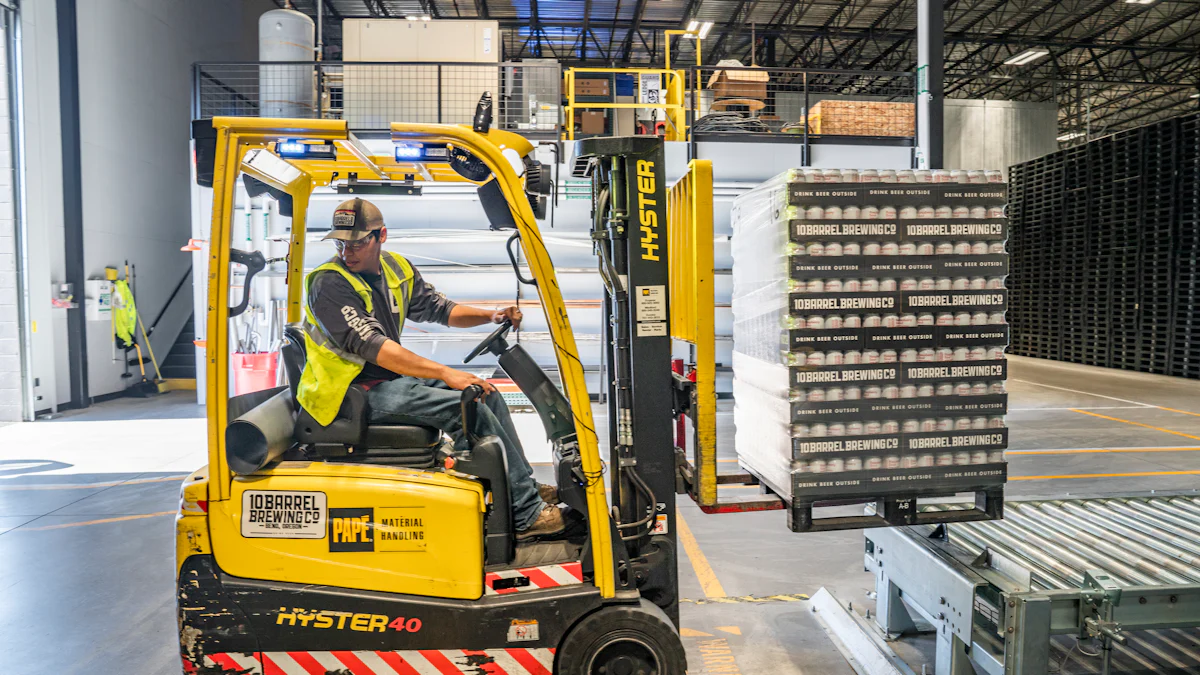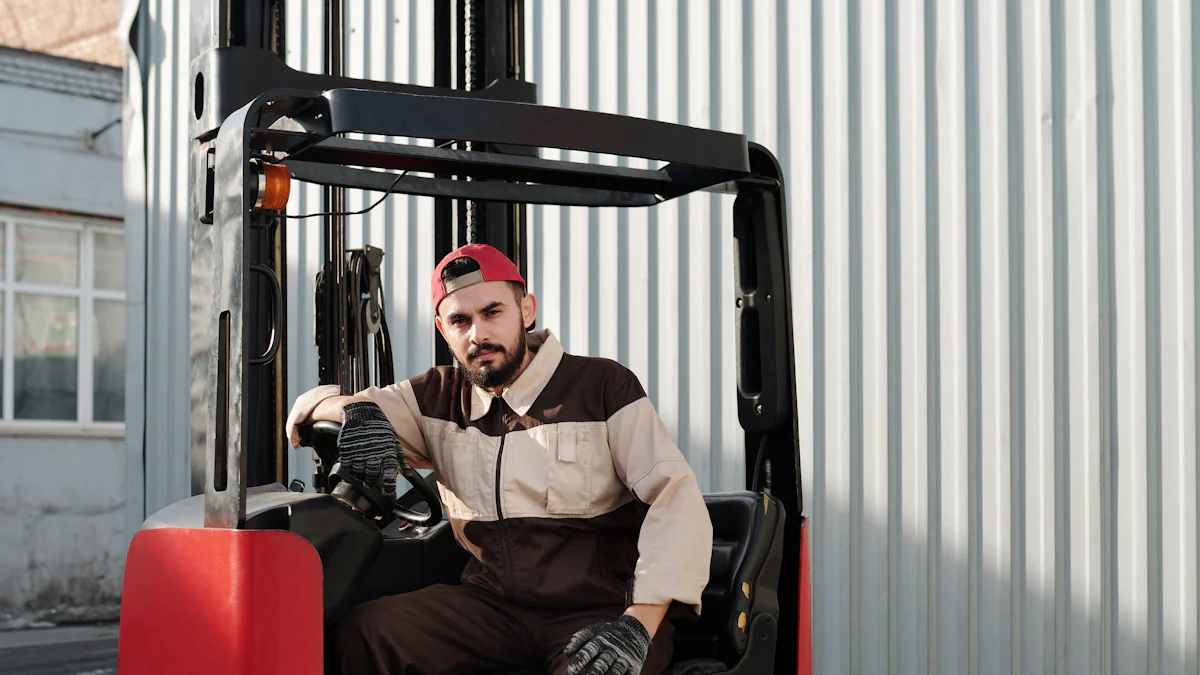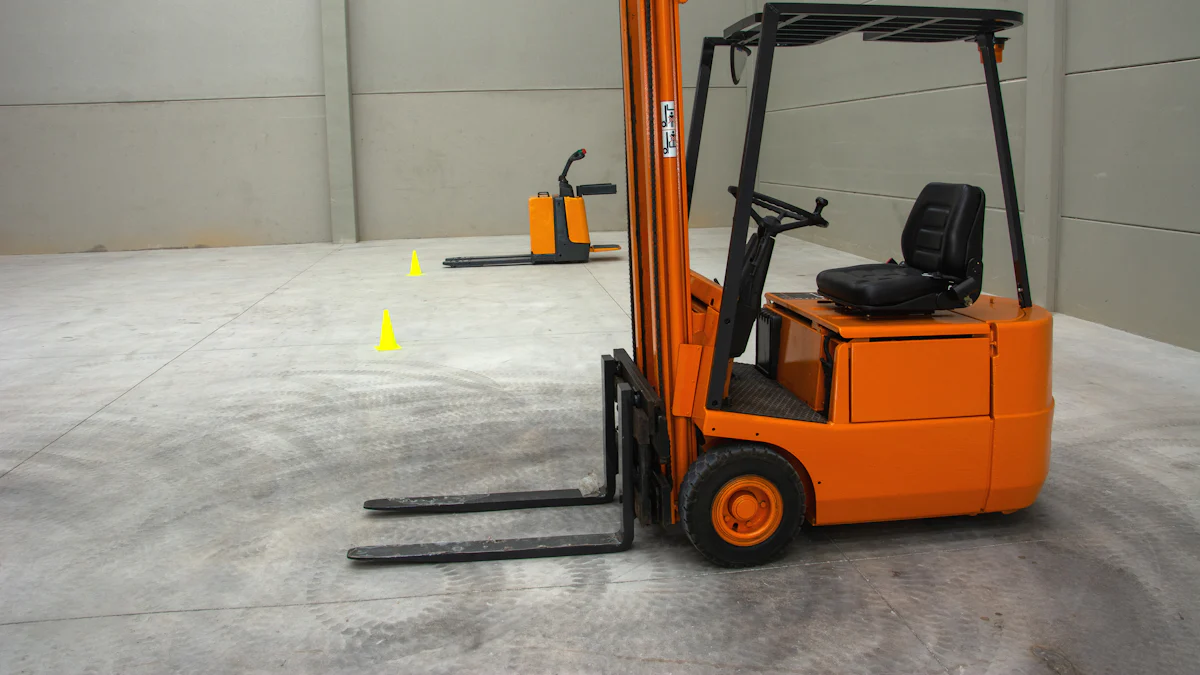
When considering pallet jacks, the choice between stand-on pallet trucks and sit-on models is crucial. Stand-on pallet trucks provide operators with a standing platform for efficient movement of loads, while sit-on pallet trucks offer a different set of advantages. Understanding the nuances between these options is essential to optimize material handling operations. In this blog, we delve into a comprehensive comparison of stand-on pallet trucks and sit-on pallet trucks to determine the superior choice based on various factors.
Stand-On Pallet Trucks

Efficiency in narrow aisles is a standout feature of stand-on pallet trucks. The design and build of these trucks prioritize maneuverability, allowing operators to navigate tight spaces with ease. When it comes to load capacity, stand-on pallet trucks boast impressive capabilities that cater to heavy-duty applications. The versatility they offer extends beyond the warehouse, making them a valuable asset in various settings.
Operator comfort is a key advantage of stand-on pallet trucks. The ergonomic design ensures that operators can work efficiently without compromising their well-being. Additionally, the standing platform provides better visibility and control during operation. Versatility is another strength of stand-on pallet trucks, as they can adapt to different tasks seamlessly.
Despite their numerous advantages, stand-on pallet trucks have some limitations. Vertical stacking is one area where these trucks fall short, as their design is not optimized for such operations. Operator fatigue can also be a concern, especially during extended shifts. Proper training is essential to maximize the efficiency and safety of using stand-on pallet trucks in the workplace.
Sit-On Pallet Trucks

Features
Design and Build
Sit-on pallet trucks are renowned for their robust design and sturdy build, ensuring durability and reliability in demanding work environments. The construction of these trucks prioritizes strength and resilience, making them ideal for heavy-duty applications that require consistent performance.
Load Capacity
One of the key features of sit-on pallet trucks is their impressive load capacity, allowing them to handle substantial weights with ease. This capability is essential for operations that involve transporting heavy loads efficiently and safely, contributing to increased productivity and operational efficiency.
Maneuverability
Despite their larger size compared to stand-on pallet trucks, sit-on models offer excellent maneuverability. The design elements incorporated into these trucks enable operators to navigate through various spaces with precision and control, enhancing overall workflow efficiency.
Advantages
Operator Comfort
Operator comfort is a significant advantage of sit-on pallet trucks, providing operators with a comfortable seating position during extended periods of use. The ergonomic design ensures that operators can focus on their tasks without experiencing discomfort or fatigue, promoting a conducive working environment.
Long-Distance Travel
Sit-on pallet trucks excel in long-distance travel applications, offering operators the convenience of efficient transport over extended distances. This feature is particularly beneficial in settings where frequent movement across large facilities or warehouses is required, enhancing operational flexibility and speed.
Stability
Stability is a key advantage of sit-on pallet trucks, ensuring secure handling of loads during transportation. The design elements integrated into these trucks prioritize stability and balance, reducing the risk of accidents or load shifting. This feature enhances overall safety standards in material handling operations.
Disadvantages
Larger Turning Radius
One limitation of sit-on pallet trucks is their larger turning radius compared to stand-on models. This factor can impact maneuverability in tight spaces or congested areas, requiring operators to navigate carefully to avoid obstacles or obstructions during operation.
Higher Cost
A potential disadvantage of sit-on pallet trucks is their higher initial cost compared to stand-on alternatives. While the investment may be greater upfront, it is essential to consider the long-term benefits and operational advantages that justify the initial expenditure over time.
Space Requirements
Sit-on pallet trucks have specific space requirements due to their size and design characteristics. Operators need adequate space for maneuvering and storage when using these trucks, which may pose challenges in constrained or limited workspace environments.
Comparative Analysis
Application Suitability
Warehouse Operations
- Stand-on pallet trucks are tailored for fast and efficient internal transport of heavy loads in warehouse settings.
- These trucks excel in maneuverability, allowing operators to navigate through narrow aisles with ease.
- The optical presence sensor enhances operator comfort and safety during operations, ensuring a smooth workflow.
Dock Work
- Standard pallet trucks are primarily used for rapid horizontal mobility in dock work scenarios.
- Their versatility in handling various load capacities makes them a valuable asset for loading and unloading tasks.
- The controls on these trucks are designed for quick and precise movements, optimizing efficiency in dock operations.
Long-Distance Transport
- Platform pallet trucks stand out in long-distance transport applications, offering efficient material handling over extended distances.
- With excellent ergonomics and maneuverability, these trucks provide operators with the comfort and control needed for prolonged travel.
- Their design prioritizes stability, ensuring secure handling of loads during transportation across different locations.
Cost-Effectiveness
Initial Investment
- Stand-on Pallet Trucks
- The initial investment for stand-on pallet trucks is justified by their high performance and efficiency in material handling operations.
- These trucks offer a cost-effective solution for applications that require fast internal transport of heavy loads within warehouses.
- Standard Pallet Trucks
- Standard pallet trucks present a budget-friendly option for businesses looking to enhance horizontal mobility within working spaces.
- Despite their lower initial cost compared to other models, standard pallet trucks deliver reliable performance and durability.
Maintenance Costs
- Platform Pallet Trucks
- Platform pallet trucks are designed for durability and longevity, reducing maintenance costs over time.
- The efficient handling of materials contributes to the longevity of these trucks, minimizing the need for frequent repairs or replacements.
- Standard Pallet Trucks
- Standard pallet trucks require regular maintenance to ensure optimal performance and safety during daily operations.
- While maintenance costs may vary based on usage intensity, investing in preventive maintenance can prolong the lifespan of these trucks.
Operational Efficiency
- Stand-in Power Pallet Trucks
- Stand-in power pallet trucks offer high operational efficiency due to their fast and efficient internal transport capabilities.
- The maneuverability of these trucks enhances workflow efficiency by reducing downtime and streamlining material handling processes.
- Standard Pallet Trucks
- Standard pallet trucks contribute to operational efficiency by providing rapid horizontal mobility within working spaces.
- Their versatility in handling different load capacities ensures seamless workflow integration across various operational tasks.
Safety Considerations
Operator Training
- Proper training is essential for operators using stand-on pallet trucks to ensure safe and efficient operation.
- Training programs should focus on familiarizing operators with the controls, safety features, and best practices for maneuvering the truck effectively.
Accident Prevention
- Implementing safety protocols such as regular equipment inspections and operator awareness programs can help prevent accidents involving standard pallet trucks.
- Maintaining clear pathways and designated loading zones can reduce the risk of collisions or workplace incidents during material handling activities.
Ergonomics
- Prioritizing ergonomic design features in platform pallet trucks enhances operator comfort during long-distance travel applications.
- Adjustable seating positions, intuitive controls, and ergonomic handles contribute to a comfortable working environment that promotes productivity and reduces operator fatigue.
- Summarize the benefits of each pallet truck type.
- After considering all factors, stand-on pallet trucks emerge as the superior choice for efficiency and versatility.
- Make an informed decision based on your specific operational needs to optimize material handling processes.
Post time: Jun-05-2024
